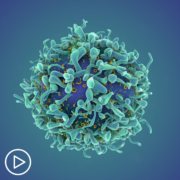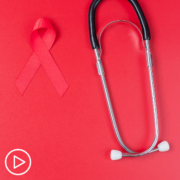How Has Bispecific Antibody Therapy Impacted Myeloma Care?
How Has Bispecific Antibody Therapy Impacted Myeloma Care? from Patient Empowerment Network on Vimeo.
What has been the impact of bispecific antibody therapy for myeloma care? Nurse practitioner Alexandra Distaso from Dana-Farber Cancer Institute discusses how bispecific antibody therapy fights cancer and patient situations that are served especially well by the therapy.
Alexandra Distaso, MSN, FNP-BC is on the Multiple Myeloma Nursing Team at Dana-Farber Cancer Institute.
See More from The Care Partner Toolkit: Bispecific Antibodies
Related Resources:

Bispecific Antibodies for Myeloma | Patient Eligibility Requirements |

|

|
Transcript:
Katherine:
We’re going to be focusing on bispecific antibody therapy. It’s a relatively new approach. What is it exactly?
Alexandra:
Yeah. So, bispecific antibodies are a really exciting new therapy in myeloma that we’ve had for within the last year.
So, we have three bispecific antibodies that are currently approved right now. And the way that they work is, the medication binds to the tumor site on your plasma cell, where the myeloma cell is, and it binds to a T cell, which is your immune system cell. And it kind of works to redirect the T cell, your immune system, to kill off the cancer cells in your body.
Katherine:
Okay. How has this treatment impacted the state of myeloma treatment and care?
Alexandra:
This has been a great option for patients who are now triple-class refractory and further into their myeloma journey. The development of these new drugs represents really kind of a new era in myeloma. We’re having a lot of patients who are now exposed to more therapies with using three or four drug therapies in the first-line setting. So, having an extra line of therapy now further down the road has been a great option for a lot of patients.










